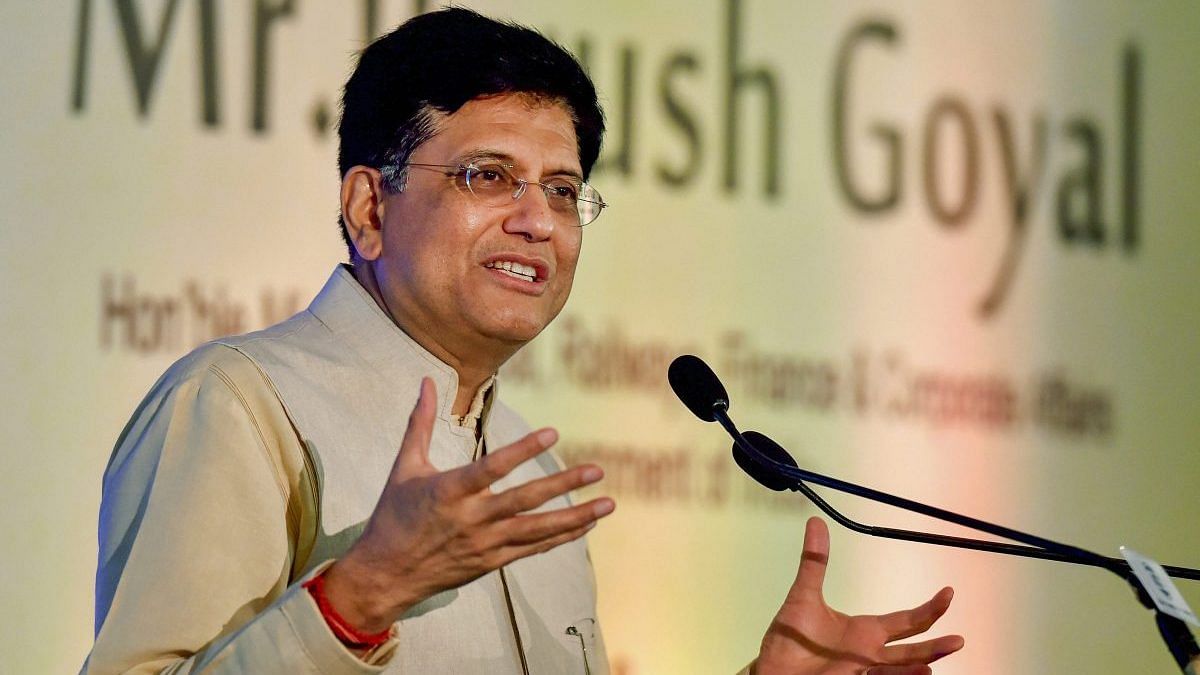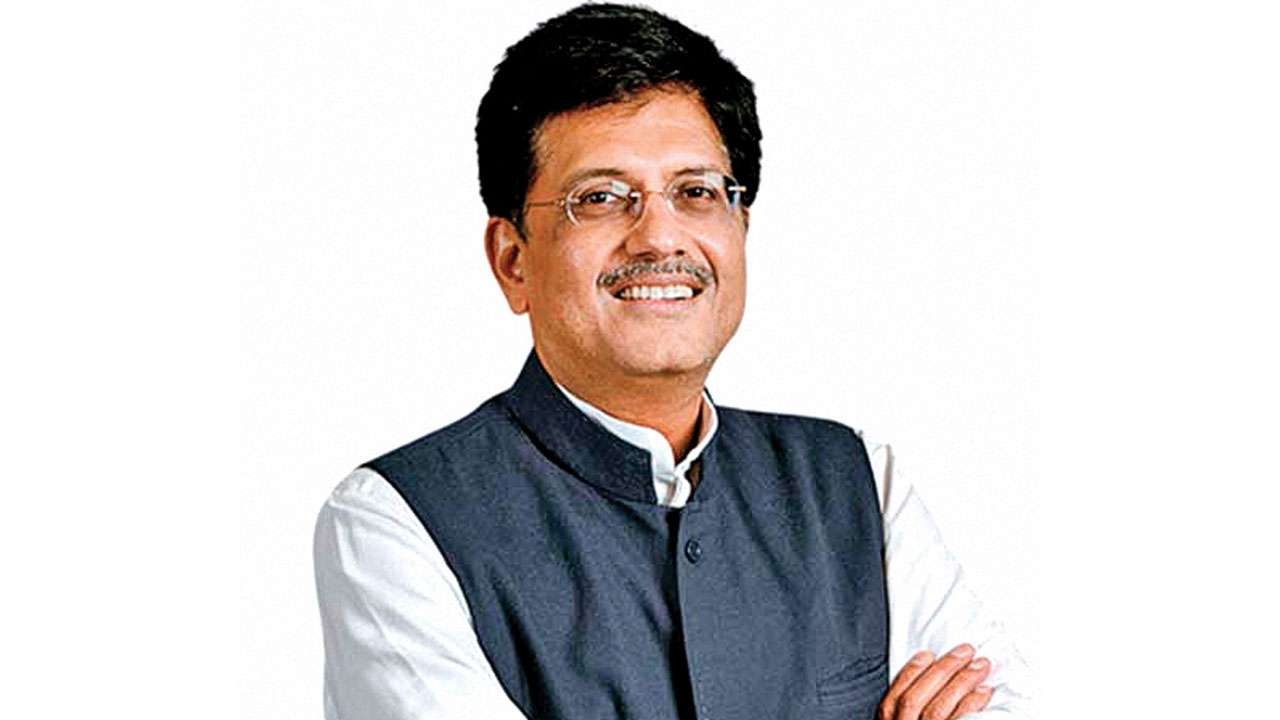Piyush Goyal: Exports improving, from 10-12% in June
Exports improving, from 10-12% in June, said Piyush Goyal
Exports have started improving by 10-12 percent in June, said Piyush Goyal on Monday.
According to Commerce and Industry Minister Piyush Goyal, India’s exports show improvement signs because the contraction in outbound shipments in June has come right down to about 10-12 percent compared with 60 percent in April.

India’s exports declined to 36.47 percent in May to USD 19.05 billion. Piyush Goyal said at a CII function that “Currently, we are about 10-12 percent in June. We’ve reached up to 80-90 percent of the extent of exports that we had in June 2019 within the present month. I’m awaiting the data for the third week of June.”
The minister said that the most significant target is on sustainable growth and not on giving “handout” for exports. He said subsidies are never suitable for businesses and do not help domestic exporters engage with the earth from a foothold of strength and power. He was asked about foreign direct investment (FDI), and he said most sectors are open for overseas investors, but the ministry is hospitable to other ideas.
India’s exports diminished by a record 60.28 percent in April to $10.36 billion, shrinking for a second straight month because the Covid-19 lockdown took its toll on trade with foreign countries.
The rate of fall in export trade was the foremost since a minimum of 1 April 1995. Manufacturing units remained shut for the initial 20 days thanks to the nationwide curbs and faced significant logistics and supply-side hurdles afterward. The country’s exports had decreased by 34.57 percent in March.

According to the commerce and industry ministry data, Imports crashed 58.65 percent to only $17.12 billion in April. Within the same month, petroleum imports were drastically cut, and gold inflows exhausted. As a result, the monthly deficit fell to only $6.76 billion, rock bottom since May 2016, when it had been $6.27 billion.
India has started exports.
India has begun the export of farm products like dairy, rice, meat, and processed food items after the government jumped in to resolve the issues related to packaging and transportation caused thanks to the COVID-19 lockdown. The Union Agriculture Ministry, during a press release, said exporters’ issues were resolved by the farm export promotion body that’s Agricultural and Processed Food Products Export Development Authority (APEDA).
The ministry said that exports of all major products, i.e., rice, poultry, groundnut, meat, dairy, processed food, and organic products, has begun.
APEDA has put during tons of efforts and issues related to curfew passes, transportation, and packaging units that have been resolved.

The ministry claimed that the government has adopted; they are issuing digital copies of phytosanitary certificates for exports and remarked it as a flexible approach. At present, the government has issued 9,759 phytosanitary certificates for exports.
On specific demand from foreign countries, agri-cooperative NAFED has exported 50,000 tonnes of wheat to Afghanistan and 40,000 tonnes of the grain to Lebanon under the G2G arrangement.
Despite several nations ordering significant quantities of medicine and medicines from India, exports just saw a marginal 0.25 percent rise in April, after happening by quite 22 percent in March. The same was exact for gems and jewelry, which slid by 99 percent and sent out only $36 million worth of products.
The reason behind the decline in exports and imports
The only reason behind the decrease in export and import is that the widespread of pandemic COVID-19 that caused lockdown across the entire world put an interruption button on the imports and exports of the country. There’s quite 4 lac, and therefore the price has reached 14,011.
Contribution of exports and imports in GDP of India
Exports of products and services represent the price of all goods and other market services provided to the rest of the earth. They include the worth of merchandise, transport, travel, freight, insurance, license fees, royalties, and other services, like construction, communication, information, financial, personal, business, and government services. They are doing not include employee compensation and investment income (previously called factor services) and transfer payments.
In India, exports of products and services (% of GDP) were reported at 19.74 you tired of 2018, according to the earth Bank collection of development indicators, compiled from officially recognized sources. India – Exports of products and services (% of GDP) – actual values, forecasts, historical data, and projection sourced from the earth Bank in 2020.
Exports and Imports can get affected thanks to boycotting China.
As outskirt strains among India and China erupted with the deadliest conflict in over four decades, leaving 20 Indian officers dead, there are involves boycotting products imported from the neighboring country. That, nonetheless, won’t be just because the two economies are entwined. China is Asia’s biggest economy and, therefore, the world’s second-greatest with a Gross domestic product of about $13.6 trillion. India is not any. 3 in Asia at $2.7 trillion. China is India’s biggest exchanging accomplice after the U.S. It provides new segments and crude materials to interests in India’s unique businesses and innovation firms.

India wont to export many things from china as they were cheap at the value. Thanks to the India-China land dispute, India has boycotted Chinese products, which will harm export and import.
India-China economic relations
China represented over 5% of India’s full fares within the budgetary year 2019-20 and over 14% of imports. This suggests India runs a huge exchange shortage with China, the foremost significant exporter to India. While the supreme estimation of imports from our neighbor may have fallen, their offer within the general pie rose from 13.68% within the past monetary. India, as per state-upheld, Contribute India information, is that the seventh biggest fare goal for Chinese items.
Chinese fares to India involve cell phones, electrical machines, power station inputs, manures, auto segments, completed steel items, capital merchandise like force plants, telecom gear, metro rail mentors, iron and steel items, pharmaceutical fixings, synthetic compounds and plastics and designing products, additionally to other things, as per the Service of Business.

According to Invest in India, India’s imports from China jumped 45 times since 2000 to succeed in over $70 billion in 2018-19.
China’s foreign direct investments come to metallurgical industries, renewable energy (solar panels), electrical equipment, automotive, and chemicals. China Global Investment Tracker showed Chinese FDI into India at $4.14 billion in 2019, and China’s commerce ministry pegs the figure at $8 billion for 2018-19.
According to Invest in India, there are roughly 800 Chinese companies within the domestic market. They need approximately 75 manufacturing facilities for smartphones, consumer appliances, construction equipment, power gear, automobiles, glass fiber, and chemicals. Oppo, Vivo, Haier, Fosun International, SAIC, and Midea are several of India’s largest Chinese brands and makers. Adani Global Ltd., Godrej & Boyce Manufacturing Co., and Aurobinda Pharma Ltd. are several Indian firms present in China.
The FDI numbers, however, don’t present an entire picture of China’sChina’s business reach in India. Chinese Hooks In India’sIndia’s Startups, Chinese funds and corporations often route their investments in India through offices in Singapore, Hong Kong, and Mauritius. “In several cases, India’s investment hasn’t been made within the name of the Chinese investor, and is difficult to trace.” Chinese tech investors have put an estimated $4 billion into Indian startups, consistent with the report. Till 2020 March, 18 of India’s 30 unicorns are Chinese-funded.




